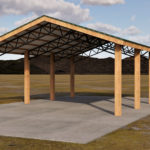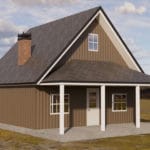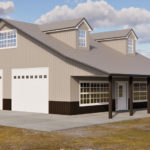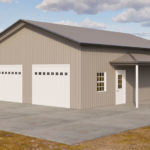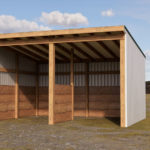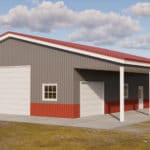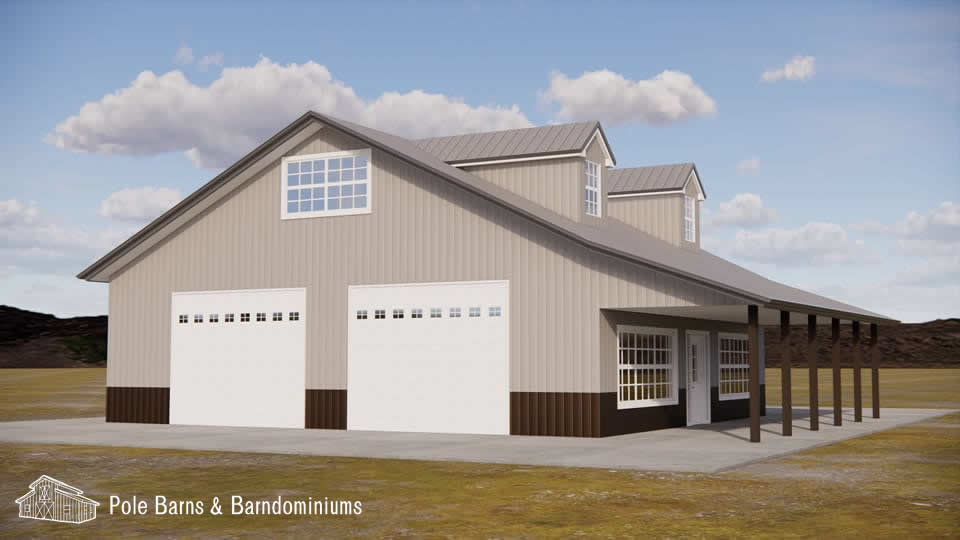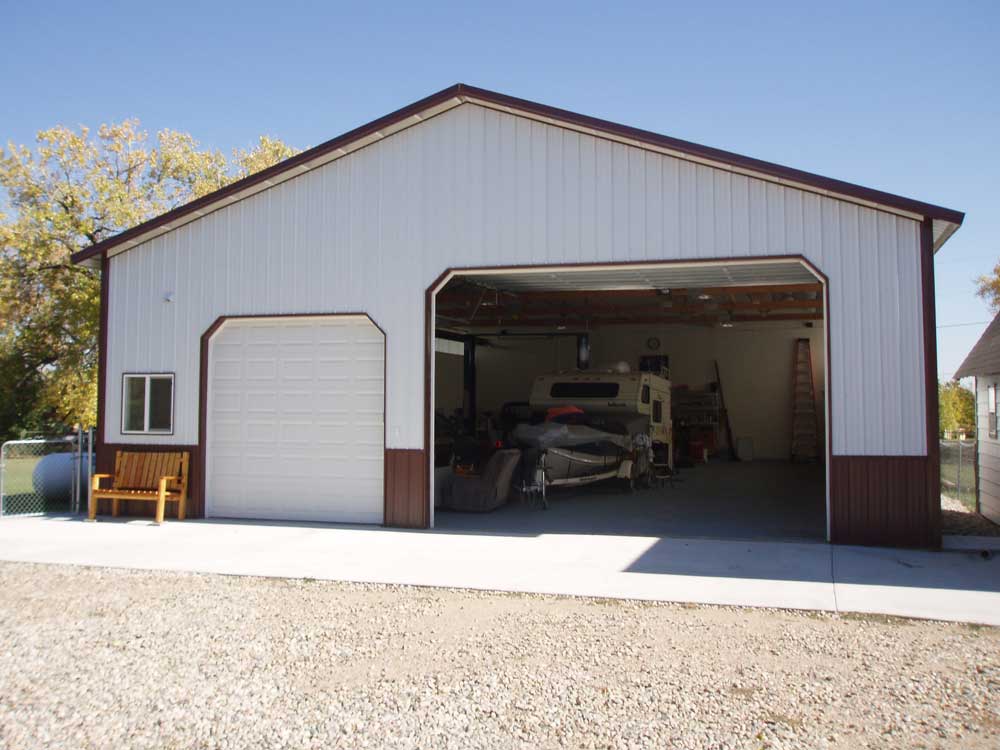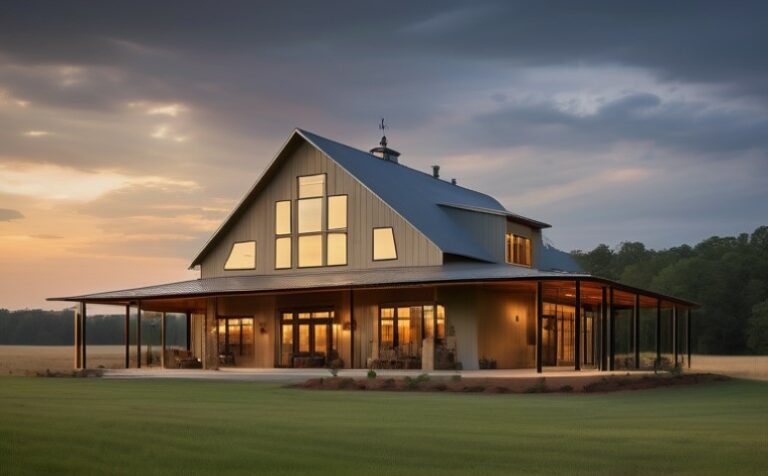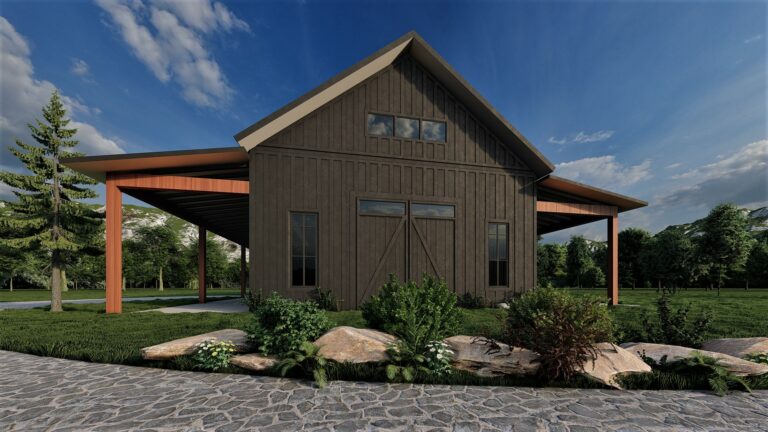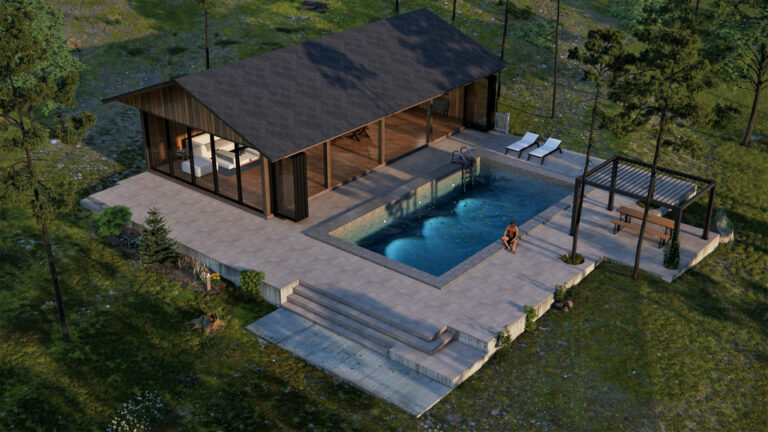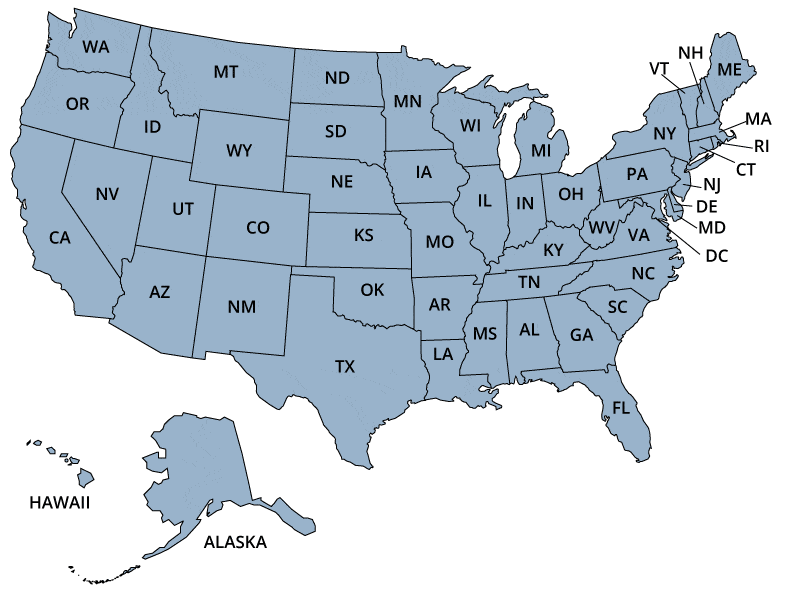Residential Pole Buildings – Over the past few years, pole buildings have become popular. One of the reasons for this increase in popularity is pole barn houses have the same look and feel as a modern home without the metal look. In the past, residential pole buildings were boring and plain, but that is no longer the case. Now, you can build a beautiful residential pole building that looks like it came right out of a magazine.

Connect with multiple Suppliers.
Do you want quotes for a metal or wood building?
Connect with multiple Pros.
Do you want quotes for a metal or wood building?
Connect with multiple Suppliers.
Do you want quotes for a metal or wood building?
What is a residential pole building?
A residential pole building is a post-frame construction that is built using large poles as the primary support. The walls and roof are then attached to the poles. This type of construction is very sturdy and can withstand high winds and snow loads.
A residential post-frame building can be any size, but they are typically smaller than a traditional home. They can be used as a primary residence, secondary residence, or even a vacation home.
Residential Pole Building Types:
Barndominiums – These unique homes offer the best of both worlds, combining the rustic charm of a barn with the modern amenities of a conventional home. If you’re considering building a Barndominium, here’s what you need to know.
Pole Barn Carport – If you’re looking for a way to keep your vehicles or other equipment safe from the elements, a pole barn carport is a great option. These structures are typically made from metal and have a roof to help protect your belongings from the sun, rain, and snow.
A pole barn cabin is a type of cabin that is built using poles as the main support structure. The walls and roof are then constructed from other materials, such as wood, metal, or plastic. Pole barn cabins can be used for a variety of purposes, such as storage sheds, workshop space, or even as a small home.
Pole Barn Homes – When most people think of homes, the first thing that comes to mind is a traditional house with a pitched roof and four walls. But there’s a new way to build a home that’s gaining in popularity – pole barn homes.
Pole Barn Garage – You love your home, but it seems like there’s just never enough room. The kids have all their toys in the living room, and every time you try to park your car in the garage, there’s something in the way. It’s time to take back your space with a pole barn garage.
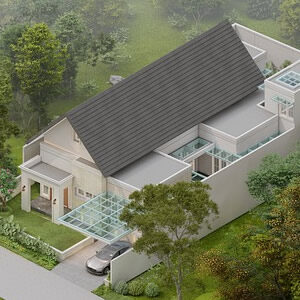
Need An Architect For Your Pole Barn? Compare Architect Prices and Save!
Simplify your research by letting us do the work for you.
Pole Barn Shed – Pole barns have become one of the most popular choices among home and business owners for a variety of reasons. They offer a great deal of space and can be built relatively quickly and easily compared to other types of structures.
Pole Barn With Lean-To – A pole barn with a lean-to is a great option for those who want the benefits of a traditional barn but with a more modern look. This type of barn is perfect for those who want to use it for storage or as a workshop, as the lean-to provides extra space and protection from the elements.
Pole barn with loft – There are several reasons you might want to consider adding a second floor or loft space to your pole barn. Maybe you need the extra storage space that a loft can provide. Or maybe you want to create a living space above your garage or workshop.
An RV pole barn is a great way to protect your investment and keep your RV safe from the elements. These structures offer protection from the sun, wind, and rain, and can keep your RV looking like new for years to come.
Why are residential pole buildings becoming popular?
There are several reasons why residential pole buildings are becoming popular. One of the most popular reasons is that they are very affordable. When compared to traditional stick-built homes, pole barn houses are much less expensive.
Another reason why residential pole buildings are becoming popular is that they can be built very quickly. In most cases, a pole barn house can be built in just a few weeks. This is much faster than a traditional home which can take several months to build.
Post-frame homes are also becoming popular because they are very easy to maintain. There is no need to paint or stain the exterior of the Post-frame homes, and the poles that make up the frame of the house will not rot or decay.
The absence of load-bearing walls in post-frame buildings also makes it easier to add on to the house in the future. If you want to add another room or expand the size of an existing room, it is much easier to do with a post-frame house than a traditional stick-built house.
If you are looking for an affordable, fast, and easy-to-maintain home, a residential pole building may be the perfect option for you. Contact a local builder today to learn more about pole barn homes and how a pole barn home can benefit you.
Benefits You Can Have From Post Frame Construction
A residential pole building has many benefits over traditional stick-built homes. They are more affordable, easier to build, and easier to maintain. Here are some of the specific benefits you can have from a pole barn house:
Affordability
A residential pole building is much more affordable than a traditional stick-built home building project. This is because they use large poles as the primary support instead of expensive lumber. The savings on materials can be passed along to the consumer, making pole barn houses more affordable than traditional homes.
Speed of Construction
Another benefit of pole barn homes is that they can be built very quickly. In most cases, a post-frame home can be built in just a few weeks. This is much faster than a traditional home which can take several months to build.
Easy Maintenance
A residential pole building is also very easy to maintain. There is no need to paint or stain the exterior of the post-frame home, and the poles that make up the frame of the house will not rot or decay. This makes pole barn houses one of the easiest types of homes to maintain.

Need To Add On To Your Existing Structure?
Let us help you find the right contractor fast and easy.
Energy Efficiency
Post-frame construction is also very energy efficient. The large poles that make up the frame of the house act as thermal mass, absorbing and storing heat. This helps to keep the interior of the house warm in the winter and cool in the summer which helps the energy efficiency of your dream home.
When you first look at post-frame a residential building, the cost will be one of the most appealing characteristics. Pole barn houses will cost much less when compared with other methods of construction. This is true even when you add features such as decorative windows, overhands, and wainscot.
Residential Building Applications of Post Frame Buildings
Pole Barn Garages
As the years go by, everyone starts to collect things whether they realize it or not. These collected items are precious to people and you will want to protect the Residential Pole Buildings. Fortunately, there is enough space in the country to build garage storage, but you will want this to be close to home.
In most cases, a standard garage will not be enough for everything you have such as cars, campers, boats, workbenches, bicycles, cars, and other items. If you cannot fit everything in your garage, you need to upgrade to a pole building garage.
These garages will be on your property and you can easily store and access everything that you want to store. You will not have to pay any monthly rentals for storage space because you own the storage and it is on your property. The money you would spend on rental units will be better spent on a permanent place for all your favorite things.
RV Storage Buildings
Getting an RV is a serious investment and you do not want the elements to destroy your investment. You must protect your RV exterior from snow, sun, and rain. To do this, you need to have an RV storage building.
Building Residential Pole Buildings will not only protect the outside of the RV but the interior will also be looked after. Having your RV in a storage pole building will ensure the wiring, insulation, and upholstery are not damaged. A pole-built storage barn is a great choice for RV storage as it guarantees your investment is safe.
Workshop Buildings
Residential buildings post-framed workshop is something that a lot of people want to have because they can do all their DIY projects easily. A workshop can also be the place you go to for some time alone or where you socialize with some of your close friends. It usually comes with a smaller living space connected to it. Dedicated workshop buildings will have everything you need from a workbench to a place for the lawnmower to shelves for all your stuff. You can also put a TV, fridge, and decorations to make this into the ultimate relaxation space.
If you are a car enthusiast, you need to have a workshop. These pole buildings will be tall enough for a car lift and wide enough for your workbench as well as the tool chests. It is common to have a building that is a double garage with a third bay for your workshop. When you have a dedicated workshop, you will also be able to expand it for very little.
Hobby Shops
For some people, their hobby is their passion and they love to work on it every day. If this is you, then you should have a space that is dedicated to your hobby. This can be difficult if your hobby is carpentry or metalwork as these make a lot of noise and require a lot of power tools.
The best way to have your own space for your hobby is to build a residential buildings post-framed hobby shop. These residential pole buildings can be as big or small as you want and you can put in all the features that you need. You can have a workbench, power tools, and materials storage all in one place. This way, you can work on your hobby any time you want without disturbing anyone else.
How to Get Started With a Residential Pole Barn Building Project?
Now that you know all about the different types of residential pole buildings, it is time to start planning your project. You need to think about what you want to use the building for and how much space you need. Once you have an idea, you can start looking at prices and plans from floor planning websites.
Prices will vary depending on the size of the building and the complexity of the design. You must get plans from a reputable website or company to avoid any issues during construction.
The Construction Process of a Residential Pole Barn
The entire process of turning a pole barn into your dream home is not as complicated as you might think. It is a relatively simple process that can be completed in a short amount of time. The first step is to contact a reputable company that specializes in this type of construction. This will ensure that you get the best possible price and quality for your project.
Once you have found a company, the next step is to schedule a consultation. This is where you will discuss your vision for the project and any specific needs that you might have. The company will then provide you with a quote based on the information that you have provided.
At this point, you will need to decide if you want to proceed with the project. If you do, the company will provide you with a contract that outlines the terms of the agreement. This is an important document that should be reviewed carefully before signing.
Once the contract is signed, the construction process will begin. The first step is to prepare the site for the pole barn. This includes clearing any trees or brush that might be in the way. The next step is to dig the holes for the poles. This is a relatively simple process that can be completed with a shovel or an excavator.
After the holes are dug, the poles are placed into them and secured. The next step is to install the trusses, which are the beams that support the roof. Once the trusses are in place, the roofing material is installed. This can be metal, shingles, or even asphalt.
The final step is to install the siding. This can be wood, vinyl, or any other type of material that you prefer. Once the siding is in place, the trim is installed around the doors and windows. The trim can be made of wood, aluminum, or any other type of material that you prefer.
After the trim is installed, the doors and windows are hung. The last step is to add any final touches that you want, such as a porch or deck. Once this is complete, your pole barn will be ready to use.
Internet Discussion of Residential Pole Buildings
Pole Barn Kit Construction
Pole Barns can be built several ways. You will need to decide which construction method suites your needs and fits on your property.
Traditional Wood
Stick building is a traditional way of framing a barn building. Most custom builders use this as their preferred manner of constructing since they tend to build barns that are unique. Roofs, floor trusses and all framing is, in effect, created on site from individual pieces of lumber.
Pole Barns
Pole barns and garages can be built much quicker than traditionally constructed buildings. When constructed to your specifications, pole garages and post frame buildings are the perfect solution to your storage needs. They are an economical solution residential construction.
Metal Buildings
Metal Buildings are an economical solution for both commercial and smaller residential construction. This style has straight walls with a gable or sloped roofing system. Steel Buildings are an economical option they will save you money and last you a lifetime.
Compare Prices & Plans
Design The Pole Barn That Fits Your Needs.
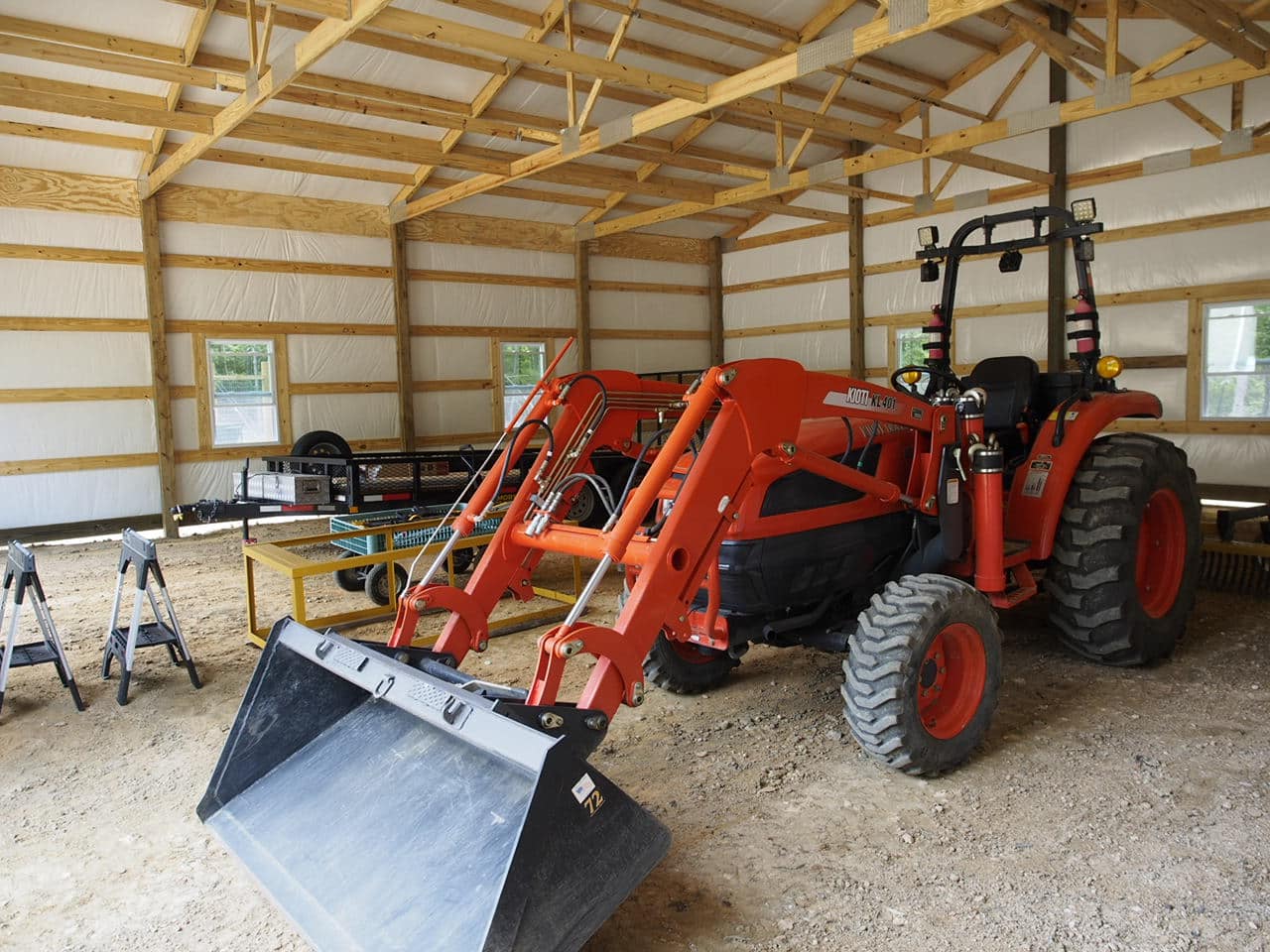

Need An Architect For Your Pole Barn? Compare Architect Prices and Save!
Simplify your research by letting us do the work for you.


